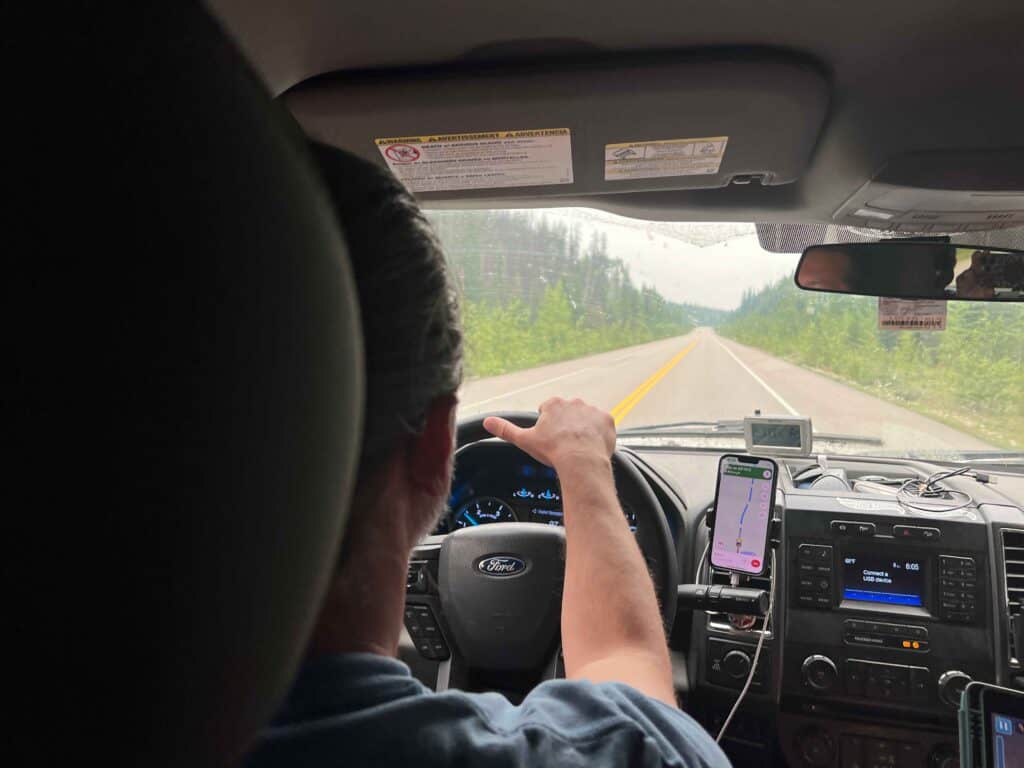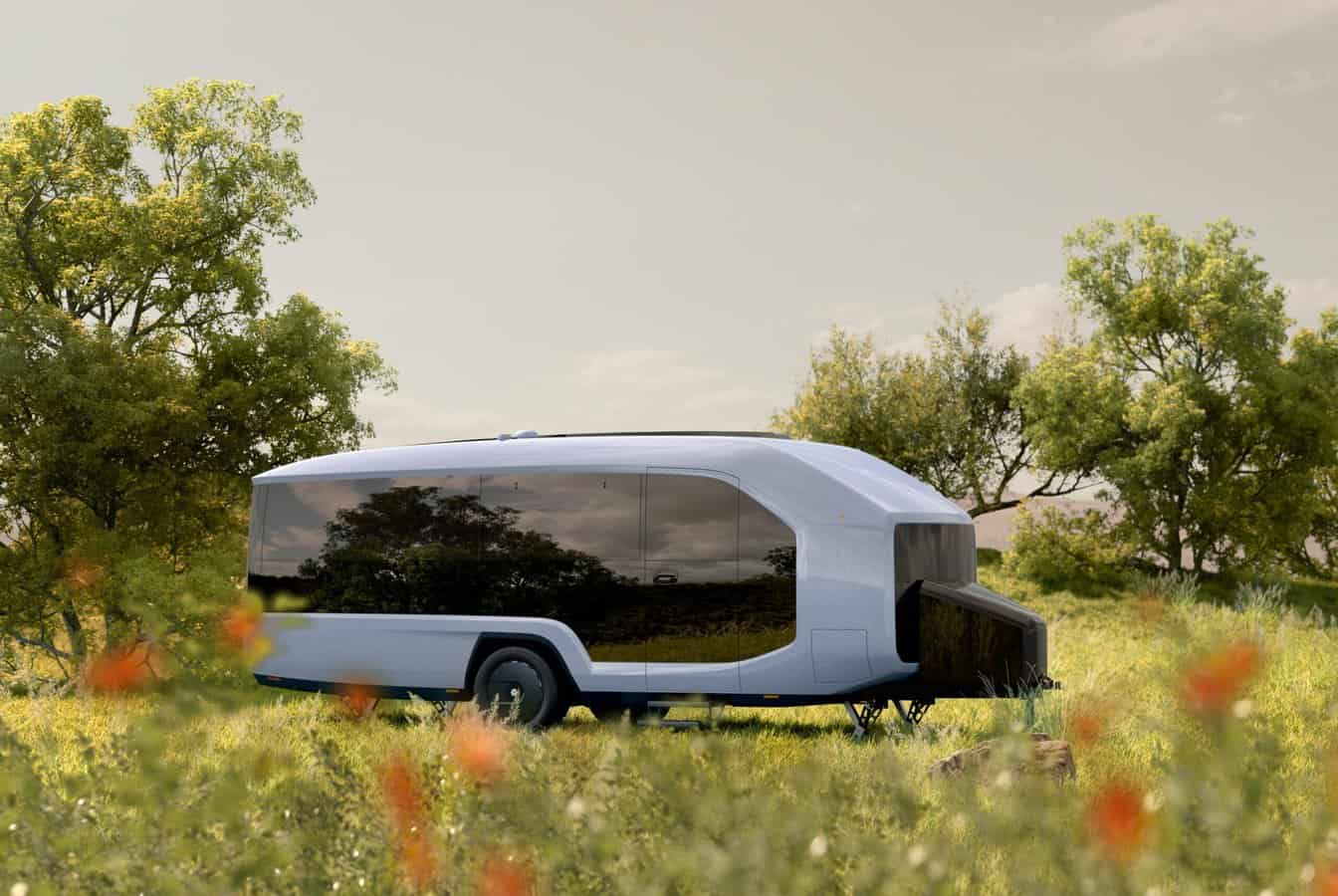
Self-Driving RVs: Will They Ever Exist?
As technology continues to advance, many of us are seeing new features and upgrades in our beloved cars and RVs. A few years ago, push-button starts, cruise control, and digital tire pressure monitoring systems were unheard of. But now they’re commonplace in many vehicles! This begs the question: Will we ever see self-driving technology in RVs?
Self-driving vehicles have been a long-standing element of sci-fi worlds. It’s fun to imagine yourself getting into a vehicle, programming a destination, and letting the vehicle handle the rest. You would be free to take a nap, enjoy the scenery, or do other tasks in your RV.
But this dream is still a long way off (if we get there at all). There are several hurdles to overcome before fully autonomous RVs can ever become real. There are plenty of prototypes and visionary concepts, but it will take a lot of work to turn these dreams into reality.
However, there are some advancements in this field that are worth exploring. Below, we’ll look at the current state of self-driving technology, as well as complications that need to be overcome for driverless RVs to be safe and practical enough for everyday use.
Current self-driving technology
Plenty of car and RV manufacturers are interested in the potential for self-driving vehicles. If they were correctly implemented, they could reduce traffic jams, eliminate human errors, and act as a convenient service for those who are unable to drive themselves.
Although fully autonomous vehicles don’t yet exist, there are some cars and RVs that have assistive technology. These functions can help you maintain a regular speed, stay centered in your lane, and even brake quickly if an obstacle crosses your path.
Levels of self-driving technology
Kelley Blue Book has identified five levels of self-driving technology. Level 0 is the lowest score, which refers to a vehicle that doesn’t have any type of automatic response while driving. The driver is solely responsible for controlling every function.
Level 1 is for vehicles that can make small corrections while you drive. This might include functions like simple cruise control or a lane-keeping system that prevents drifting.
Level 2 vehicles are a bit more capable. In some cases, the car or RV might be able to respond to exterior factors in order to create a smoother ride. Adaptive cruise control is a good example of a level 2 system. The driver sets the speed and the vehicle accelerates or brakes accordingly to match the road conditions. Advanced systems might even be able to sense how far away you are from the car in front and adjust so you remain at a safe following distance.
Driverless vehicles
Level 3 is where things start to get theoretical. These vehicles are capable of driving themselves on a fixed route. They may be able to control steering and speed by themselves. Lane-changing technology and making turns are outside of their capabilities, though, so these would be best for long drives on the highway. The Honda 100 Legend Flagship supposedly has a level 3 driving system, but it’s only available in Japan and is still in development.
Level 4 vehicles begin to phase out the driver entirely. They can navigate a predetermined course and all the elements that entails. Some of these don’t even have pedals or a steering wheel for drivers, so it’s entirely automatic. A few of these vehicles are being tested, but none are commercially available.
Level 5 vehicles are what we might think of as a true self-driving car. They can navigate any road and any route without help from a driver. Everything from turning to parking to switching lanes is handled by the driving system. There are currently no cars or RVs that are even close to being level 5, though.
Prototype RVs with self-driving technology
Even though there aren’t any driverless RVs for sale, there are plenty of companies who are working on this technology.
One of the most famous examples is the 2019 Galileo from Hymer (a German RV company). This was a futuristic concept that featured large windows and a smooth profile. It was designed to take passengers on long journeys without any hassle. They would be free to move about the cabin and enjoy scenic views while the RV handled all the travel details.
Of course, this was never implemented as a real option for the road. It’s something to aspire to, but it does give us an idea of what a self-driving RV might look like.
Other manufacturers have been focusing on autopilot functions. These enable the RV to make simple changes to steering and speed. It’s still important to note that drivers must remain alert and be prepared to take control at any time. This technology is far from foolproof, and there’s no true replacement for a human in the driver’s seat.
Obstacles for self-driving RVs
In theory, the technology for a self-driving vehicle exists. In order to function properly, it needs a sophisticated network of sensors, GPS navigation, and a highly trained AI. All of these parts may exist separately, but putting them into practice can be tricky. The real world is unpredictable, and a computer may not have a solution to every problem.
Let’s briefly explore some of the barriers that are slowing or halting the advancement of self-driving cars and RVs.
Safety
One of the biggest concerns is safety. Driving can be a risky business, and crashes happen every day. If a vehicle does not have the proper safety technology, it could crash into other vehicles, obstacles, or even people! Computers cannot always identify what is and isn’t a threat.
Practicality
Self-driving technology is currently quite limited. Most programs can only make minor adjustments, and even these might not be to your liking. These features can be quite expensive, and many people just don’t think that it’s practical for their driving needs.
Affordability
Speaking of price, let’s talk about the cost of a true self-driving vehicle. Some of the most expensive RVs have been known to cost $3 million. There’s a good chance that an RV with driverless technology could be in this range or higher. They would be luxury vehicles that very few people could afford. The current prototypes don’t even have a price because it’s too hard to quantify this type of value.
Infrastructure
Simply put, the world isn’t designed for self-driving cars. There are plenty of streets that are poorly labeled, have blind corners, or are too narrow for RVs to navigate without human assistance. There aren’t any special lanes for RVs and large vehicles either. Our current street infrastructure is built for humans, not machines.
Legality
Even if self-driving technology does become realistic, it still might be subject to legal restrictions. This type of vehicle poses a threat to other people on the road, and it’s highly probable that certain states could restrict the use of driverless vehicles.
Peace of mind
Finally, many people are nervous about the idea of a vehicle without a driver. There’s a feeling of helplessness and fear that’s hard to overcome. Early prototypes have also proven that they can’t be trusted on the open road, so this makes people even more wary. Even if human drivers are imperfect, we have the ability to react and adapt to anything that might happen on the road. A computer offers no such guarantee!
Final thoughts
A self-driving RV is theoretically possible, and some companies are exploring this avenue. But there are so many hurdles to overcome before this becomes a realistic option. One thing’s for sure: If self-driving RVs do become available, it won’t happen for many more years.
One of the best parts about RVing is engaging with the community of traveling enthusiasts. iRV2 forums allow folks to chat with other RVers online, and get other perspectives on everything RVing, including products, destinations, RV mods, and more.
Related articles:





Self parking while towing sounds problematic.
We are going to need new laws to keep us safe. Tech will just continue to plow forward.
After working over twenty years in the micro processor controlled industry repairing computers and related peripherals I would hate to see any self driving vehicle on public roads and highways unless there was triple redundancy on every circuit. How many times has one experienced an out of box failure of an electronic device? Would you like a sensor, relay or electric motor fail while doing 60 miles an hour on a twisty highway? Me either. Autonomous vehicle have a long long way to go before they are anywhere near safe for public use on public roads and highways. Just say no to autonomous vehicles.